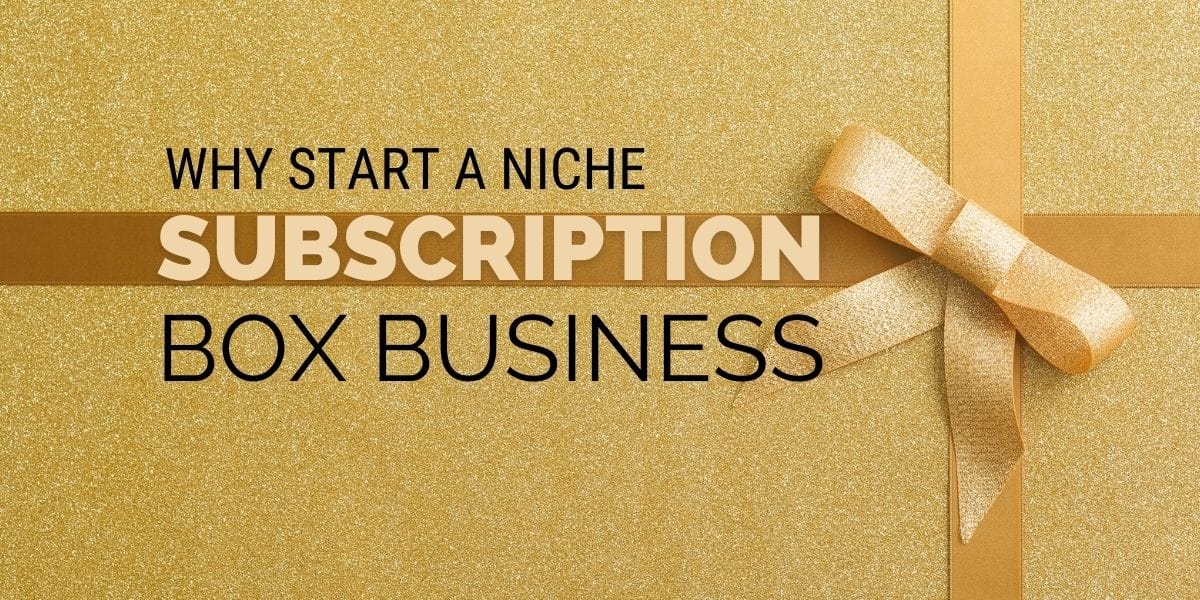Why Start a Niche Subscription Box Business?
Starting a niche subscription box business in 2025 can be a highly rewarding venture, especially with the growing demand for personalized, curated experiences that cater to specific interests.
Subscription boxes have gained significant traction in recent years, and the trend continues to evolve as consumers seek convenience, discovery, and the thrill of receiving surprise products regularly.
A niche subscription box focuses on a specialized market, offering carefully selected products tailored to a particular hobby, interest, or lifestyle. These could range from food and beauty products to books, fitness gear, and even niche collectibles.
Frequently Asked Qustions (FAQs)
1. What is a niche subscription box business and why is it a rewarding venture in 2025?
A niche subscription box business focuses on delivering curated products tailored to a very specific interest, hobby, or lifestyle, such as organic pet products or gourmet coffee for athletes.
It’s a highly rewarding venture in 2025 due to the growing consumer demand for personalized and convenient experiences.
Key advantages include relatively low startup costs compared to traditional e-commerce, the generation of predictable recurring revenue, and unique branding opportunities that foster a strong emotional connection with a targeted community.
Consumers increasingly seek discovery and the thrill of receiving surprise products, which this model perfectly caters to.
2. How does one go about defining a successful niche for a subscription box?
Defining a successful niche is the foundational step. It involves choosing an area that genuinely resonates with a specific audience to differentiate your offering and attract a highly targeted customer base.
To do this, individuals should identify their own passions or hobbies, as personal interest often translates into delivering greater value. It’s also crucial to look for underserved markets or emerging trends not yet saturated with subscription boxes.
Market research is essential to analyze existing successful models (e.g., beauty boxes, snack boxes) and then narrow the focus to a more specialized audience (e.g., “vegan beauty products” instead of just “beauty products”). Finally, considering how the box can solve a specific problem, such as stress relief or fitness, can also lead to a popular niche.
3. What are the key considerations when curating the contents of a niche subscription box?
Curating the box contents is critical as it directly influences the perceived value and customer willingness to subscribe.
The primary focus should be on quality over quantity, ensuring high-quality, unique products that genuinely appeal to the target audience.
Product sourcing is another important aspect, which can involve direct procurement from manufacturers, wholesalers, or local artisans, with an emphasis on local or sustainable options if the niche aligns.
Variety is important to keep things interesting, but there must also be a cohesive theme within each box.
Lastly, the unboxing experience is paramount; investing in branded, aesthetically pleasing packaging can make the box feel like a special gift, enhancing customer satisfaction.
4. What are the different subscription models and billing cycles commonly used in this business?
There are several popular subscription box models, each with a distinct approach. Curated boxes are carefully selected based on a specific theme or interest (e.g., luxury beauty). Personalized boxes offer items tailored to individual customer preferences (e.g., customized skincare).
Discovery boxes focus on introducing new or unknown products, providing a sense of novelty.
Mystery boxes primarily rely on the surprise element, appealing to customers who enjoy novelty items. In terms of billing cycles, common options include monthly, quarterly, and annual subscriptions, often with discounts for longer commitments.
One-time or gift subscriptions can also be offered as alternatives. Businesses might also implement different pricing tiers based on frequency or customization levels.
5. What are the essential features for an e-commerce website for a subscription box business?
A user-friendly and visually appealing e-commerce website is the primary platform for a subscription box business.
Essential features include robust subscription management capabilities, allowing customers to easily subscribe, pause, or cancel.
Clear calls-to-action (CTAs) are vital to encourage immediate sign-ups. The website should prominently display product details, images, and unboxing videos to demonstrate value and build trust. Offering flexible payment gateways (e.g., credit card, PayPal) and ensuring a simple checkout process are also crucial.
Finally, the website must be SEO-friendly and optimized for search engines, with content marketing (like blog posts) to attract organic traffic. Popular platforms like Shopify, WooCommerce, Cratejoy, and Subbly offer specialized solutions for subscription management.
6. What marketing strategies are most effective for a niche subscription box business?
To thrive in a competitive market, a strong brand and effective marketing strategy are essential.
Social media platforms such as Instagram, TikTok, and Pinterest are key for showcasing products, sharing customer reviews, and engaging with the community, leveraging visual content for the “unboxing” experience.
Influencer marketing with micro-influencers in the niche can provide broad exposure.
Referral programs offering discounts or free products for referrals are powerful for driving word-of-mouth growth.
Email marketing is crucial for nurturing leads, sending updates, and converting first-time customers into loyal subscribers.
Lastly, content marketing, through blog posts or how-to guides related to the niche, helps establish authority and improves SEO.
7. What are the options for handling logistics and fulfillment for a subscription box business?
Efficient logistics and fulfillment are critical for timely and well-conditioned delivery of boxes.
Businesses have two primary options: in-house fulfillment or third-party fulfillment services. In-house fulfillment involves storing inventory and packing boxes personally, which is suitable for small-scale operations but can become overwhelming as the business scales.
Alternatively, third-party fulfillment services like ShipBob or Fulfillment by Amazon (FBA) can manage storage, packing, and shipping, offering a scalable solution particularly useful for larger businesses seeking to outsource these operations.
8. What key metrics should a subscription box business monitor for continuous improvement?
Continuous evaluation and optimization are vital for the long-term success of a subscription box business.
Several key metrics should be monitored:
Customer Lifetime Value (CLTV), which tracks the total revenue each subscriber generates over their relationship with the business;
churn rate, measuring the percentage of subscribers who cancel their subscriptions, indicating customer satisfaction;
and subscriber growth, which tracks new sign-ups to assess marketing effectiveness.
Additionally, actively seeking and utilizing product feedback from customers on box contents and unboxing experience is crucial for fine-tuning offerings and ensuring ongoing customer satisfaction.
In this guide, we’ll break down the essential steps to starting your niche subscription box business in 2025.
Why Start a Niche Subscription Box Business in 2025?
- Growing Demand for Personalized Products: Consumers increasingly prefer curated experiences that match their personal interests. The subscription box model caters to this demand by offering a convenient way to discover new products.
- Low Startup Costs: Unlike traditional e-commerce businesses that require large amounts of inventory or warehouse space, subscription boxes usually start small and scale up, which makes them more affordable to launch.
- Recurring Revenue: Subscription models generate predictable, recurring income. This makes it easier to forecast revenue and grow your business over time.
- Unique Branding Opportunities: Subscription boxes allow you to create a distinctive brand identity that resonates with a particular community, offering a high level of emotional connection with your customers.
Steps to Start a Niche Subscription Box Business in 2025
1. Define Your Niche
The first step in creating a successful subscription box is choosing a niche that resonates with a specific audience. A niche will help you differentiate yourself from competitors and attract a highly targeted customer base.
How to Choose Your Subscription Box Niche:
- Identify your passions or hobbies: If you’re passionate about a particular subject, you’re likely to be more successful in delivering value to others who share that interest.
- Look for underserved markets: Is there an emerging trend or interest that’s growing but isn’t yet saturated with subscription boxes? For example, you could cater to pet owners who want organic or eco-friendly pet products, or fitness enthusiasts interested in high-end equipment.
- Market research: Analyze the existing subscription box market. Look at successful models like book boxes, beauty boxes, or snack boxes, and think about how you can narrow down the focus to a more specialized audience (e.g., “vegan beauty products” or “gourmet coffee for athletes”).
- Solve a problem: Consider offering products that solve a specific problem. For example, boxes that focus on stress relief, health, or fitness are especially popular.
Examples of Popular Niche Subscription Boxes:
- Snack Crate (International snacks from around the world)
- FabFitFun (Beauty and wellness)
- The Bookish Box (Books and book-themed items)
- Bespoke Post (Premium lifestyle goods for men)
2. Curate the Box Contents for Your Subscription Box Business
Once you’ve defined your niche, it’s time to curate the products that will go into your box. This step is critical because it defines the perceived value of your box, which will determine whether customers are willing to subscribe.
Things to Consider:
- Quality over quantity: Choose high-quality products that appeal to your target audience. The value of your box is measured by the perceived quality and uniqueness of the items inside, not just the quantity.
- Product sourcing: You can source products directly from manufacturers, wholesalers, or local artisans. Consider local or sustainable products if your niche targets eco-conscious consumers.
- Variety: Keep things interesting by offering variety, but also ensure there’s a sense of cohesion in the theme of the box. For example, a beauty subscription box might include skincare, makeup, and accessories in each shipment.
- Packaging matters: The unboxing experience is crucial to the success of a subscription box business. Consider investing in branded, aesthetically pleasing packaging that makes the box feel like a gift when it arrives.
3. Set Up Your Subscription Model
Choosing the right subscription box business model is essential for business success. Subscription box models can vary, so it’s important to pick the one that best aligns with your business goals.
Popular Subscription Models:
- Curated Boxes: These boxes are carefully selected based on a specific theme or interest (e.g., gourmet snacks, luxury beauty).
- Personalized Boxes: Offer personalized items based on customer preferences (e.g., tailored to a customer’s skincare needs or favorite authors).
- Discovery Boxes: Focus on introducing new or unknown products, giving customers the thrill of discovery.
- Mystery Boxes: The “surprise” element is key here, which works well if you’re targeting people who enjoy novelty items (e.g., mystery toys or collectibles).
Billing Cycles:
- Monthly
- Quarterly
- Annual (with discounts)
- One-time or gift subscriptions
Consider offering different pricing tiers based on how often customers receive boxes or how much customization they want.
4. Build an E-Commerce Website
Your website is the primary platform through which customers will learn about, purchase, and manage their subscriptions. Building a user-friendly, visually appealing website is a priority.
Key Features for Your Subscription Box Business Website:
- Subscription management: Customers should be able to easily subscribe, pause, or cancel their subscriptions. You can use platforms like Cratejoy or Subbly to manage recurring orders.
- Clear call-to-action (CTA): Make it easy for potential customers to sign up. Use strong CTAs that encourage visitors to subscribe immediately.
- Product details and unboxing videos: Show customers what to expect from the box with product images, descriptions, and videos. Demonstrating the value of the subscription will help build trust.
- Payment gateways: Offer flexible payment options (credit card, PayPal, etc.) and ensure your checkout process is simple.
- SEO-friendly: Optimize your website for search engines to attract organic traffic. Content marketing (like blog posts or product reviews) can drive more subscribers to your site.
Some platforms that offer easy-to-use e-commerce and subscription management solutions include:
5. Marketing Your Niche Subscription Box Business
To stand out in the competitive subscription box market, you’ll need to focus on building a strong brand and marketing strategy.
Effective Marketing Strategies:
- Social media: Leverage platforms like Instagram, TikTok, and Pinterest to show off your products, share customer reviews, and engage with your community. Visual content is key for subscription box businesses, especially when you’re showcasing the “unboxing” experience.
- Influencer marketing: Collaborate with micro-influencers in your niche. Influencers can unbox your products on their channels, helping you gain exposure to a wider audience.
- Referral programs: Offer discounts or free products for customers who refer others to your subscription box. Word-of-mouth is powerful, and referral programs can drive growth.
- Email marketing: Build an email list and send regular updates about new boxes, exclusive discounts, or upcoming releases. Use email to convert first-time customers into loyal subscribers.
- Content marketing: Create blog posts, how-to guides, or tutorials related to your niche. This positions you as an authority in your field and helps with SEO.
6. Handle Logistics and Fulfillment
Efficient logistics and fulfillment are crucial to ensure your customers receive their boxes on time and in perfect condition. You can either handle fulfillment in-house or outsource to third-party fulfillment centers.
Fulfillment Options for subscription box business:
- In-house: This involves storing inventory and packing boxes yourself. It’s suitable for small-scale operations but can become overwhelming as you scale.
- Third-party fulfillment services: Companies like ShipBob or Fulfillment by Amazon (FBA) can manage storage, packing, and shipping. These services are especially useful for larger businesses looking to scale without handling logistics in-house.
7. Analyze and Optimize Your Subscription Box Business
Once your subscription box is up and running, continuously evaluate its performance and look for areas to improve.
Key Metrics to Monitor:
- Customer Lifetime Value (CLTV): Track how much each subscriber is worth over the course of their relationship with your business.
- Churn rate: Measure how many subscribers cancel their subscriptions over a given period. Low churn is a good indicator of customer satisfaction.
- Subscriber growth: Keep track of your monthly subscription sign-ups to evaluate the effectiveness of your marketing efforts.
- Product feedback: Encourage customers to provide feedback on the box’s contents and their unboxing experience. This will help you fine-tune your offerings.
Why Start a Niche Subscription Box Business in 2025
Starting a niche subscription box business in 2025 can be a lucrative opportunity if you carefully select your niche, curate products that resonate with your target audience, and build a strong brand. Focus on delivering value and a unique experience for your customers, and you’ll be well on your way to building a thriving, sustainable business.
With the right marketing strategies, fulfilling customer experiences, and effective use of technology, your subscription box business could thrive in the ever-growing online e-commerce business landscape.



